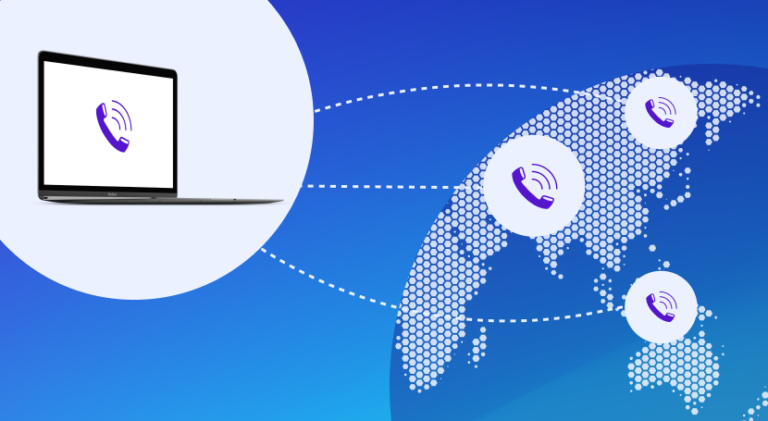SIP (Session Initiation Protocol) trunks are virtual phone lines that allow businesses to make and receive calls over the internet to anyone with a phone number. If you’re sitting on the fence on SIP, here are 5 benefits you should consider.
The Asia Pacific region’s share of world GDP has grown from 13% in 1960 to 39% in 2019.
It’s an incredible statistic when you think about it. A 300% increase in GDP output, with the APAC region now accounting for more than one-third of the world’s total GDP.
This has come about due to APAC companies’ massive expansion into new markets and the region becoming a global economic force. The growth shows no sign of slowing down. Although Covid-19 may have stalled expansion globally, it’s likely that business will continue as usual in the near future, with APAC reaching new global heights.
One of the main drivers of this growth has been the adoption of technology. Not surprising when you consider the fact that the number of internet users in APAC rose from 9.5% of the total population in 2005 to 48.4% by 2019.
As this growth in technology use continues and the APAC region becomes more and more active in the digital world, there are increasing opportunities to connect with and open up new global markets by using cutting-edge digital technology.
Cloud communications operations in new markets
One of the main ways that APAC businesses can establish a presence in foreign markets is by embracing cloud technology and communications.
For example, if a company based in Singapore wanted to expand into the Philippines, the traditional method would have looked like this:
- Open a physical office and set up a local number for customers to contact.
- Set up local numbers for sales reps to communicate with leads in that country.
- Integrate the new numbers with their current telecoms stack or PBX.
- Sign a contract with a local provider like PLTD and wait for allocation of the new numbers.
As you can imagine, this would be a costly and lengthy process. The IT team would be faced with the complex task of navigating the different regulations in each new country the business expands into. Additionally, they would have their work cut out integrating on-premises equipment to their current tech stack and networks.
Fortunately, in today’s digital world there is an alternative: SIP trunking.
SIP trunking allows companies to use cloud-based networks to connect with the local phone systems in individual countries. It’s a fast process, with provisioning of new numbers taking place almost in real-time. IT Teams are able to manage the whole process online without needing to wait for local telecoms providers. Also, the process is less costly than the traditional method.
In other words, you can set up a local communications presence in a different country or region, without being physically present there. Your sales reps and customer service personnel can be working remotely from your home country and communicating with customers through a high-quality cloud connection.
It’s easy to see how SIP trunking, combined with cloud communication technology, will give any APAC business looking to expand into new territory a big competitive edge.
It cuts out the long delay (often weeks or months) between moving into a new market and connecting with customers or clients. A company can now set up a small operations team and provide customer service from day one.
How to get the most out of SIP trunks and cloud calls
So, there’s no doubt that cloud communication technology and SIP trunking is the way forward for APAC businesses expanding into new global markets.
But there are some potential pitfalls to be aware of.
- Being far away from the source can reduce quality. IT managers often face challenges when deploying SIP trunks and finding reliable cloud communications providers. Quality is super-important when it comes to offering good customer service as you need to reduce or avoid call latency. That’s why it’s advisable to choose a cloud comms provider that is close to the source – like Toku – which is already one of the top communication providers in APAC and is therefore the number one choice for enterprise-grade cloud communications provision.
- National regulations may cause problems. Establishing communications in a new geographical area can be tricky due to different regulations. This is especially true in the APAC region where the market is heavily fragmented. Fortunately, Toku understands the APAC market and regulations and can help to establish a smooth integration.
Accelerate growth and improve reliability with cloud comms
More and more companies are opting to switch from their outdated on-premises PBX systems to more reliable cloud technology.
For this reason, there has been a growth of Unified Communications as a Service (UCaaS) and Contact Center as a Service (CCaaS) options available to businesses that want to create a local presence without being physically present locally.
Let’s take a look at some of the different service options available.
- Virtual Phone Numbers – These are telephone numbers that don’t have a physical phone line attached to them. They act as a gateway between the PSTN (public switched telephone network) and the VoIP (voice over internet protocol) system. In other words, they allow you to make and receive calls over the internet using a traditional telephone number.
- Local Phone Numbers – Some services offer local phone numbers as virtual numbers. Local phone numbers are those that don’t include a country prefix. This means when people get an incoming call from this type of virtual number it will have a local area code.
- Mobile Phone Numbers – Similar to the description above, but using an interface between mobile network and VoIP. This option also allows you to exchange SMS messages
- Caller Line Identity (CLI) – Using a SIP trunk, the service provider can assign a phone number that you own as your outbound CLI. This allows you to change the number that people see when you call them. You can choose from a network number that you own, a presentation number (a PBX extension number or non-geographic business number for example), or last diverted number for networks that apply call diversion.
- Toll-free Numbers (or freephone numbers) – It makes good business sense to offer customers free calls for support or service. Instead of the customer picking up the bill, the company pays for the call. Setting up virtual toll-free numbers follows the same process as other virtual numbers.
- Emergency Services – Emergency service calls need to be fast and reliable, which is why cloud communications are ideal. People in need of emergency assistance will get through to an operator quickly and be able to communicate their needs clearly. Importantly, the emergency services receiving the call will be able to accurately pinpoint the location of the person in need.
- Number porting – Some cloud telephony providers provide a number porting service which allows you to transfer all or some of your existing PBX numbers to a cloud service for convenience. At Toku, we take care of all the number porting for you, saving you time and effort.
Grow rapidly in new regions
One of the main things that slows down growth in new regions is establishing reliable communications systems.
SIP trunking and cloud communications solve this problem.
To get all the benefits of a reliable and fast cloud-communications network in APAC, you should consider partnering with a provider such as Toku. We offer PSTN replacement in 15 countries.
These include:
- Australia,
- Cambodia,
- China,
- Hong Kong,
- Indonesia,
- Japan,
- Laos,
- Malaysia,
- Myanmar,
- New Zealand,
- Philippines,
- Singapore,
- Taiwan,
- Thailand, and
- Vietnam
 Girish Dharmaraj
Girish Dharmaraj 


 V K Sanjeed
V K Sanjeed 
 Nora Huin
Nora Huin 
 Nishant Nandan
Nishant Nandan